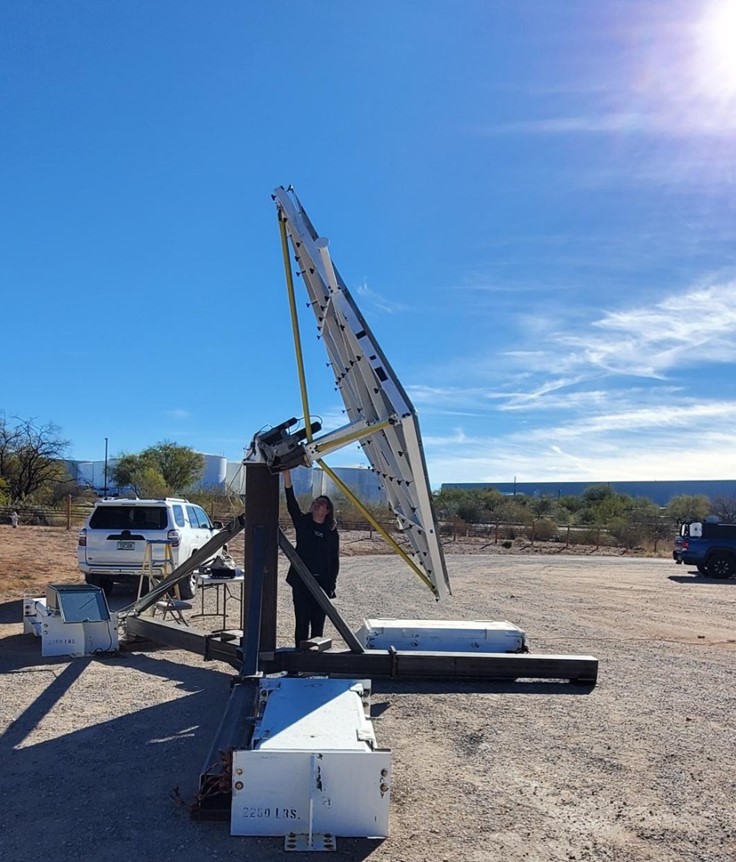
Sandia’s National Solar Thermal Test Facility is partnering with the University of Arizona’s Professor J. Roger Angel for one of four projects the Heliostat Consortium awarded last year. The project, “Twisting Heliostats with Closed Loop Tracking,” targets the U.S. Department of Energy’s goals for heliostat cost reduction, sustained multifaceted innovation, and improved solar field performance. The project is an extension of a previous DOE-funded project to develop a variable-shape heliostat with a closed-loop tracking system.

The NSTTF will test Professor Angel’s new type of heliostat designed to achieve much higher concentrations of sunlight at the receiver throughout the day. Sandia will install prototypes of a variable focused heliostat at the NSTTF and evaluate its performance, including mirror optical accuracy as a function of heliostat tracking orientation, size and quality of the reflected sun spot throughout a solar day, and tracking accuracy. The test will also measure the same performance parameters for a standard NSTTF heliostat to provide a side-by-side comparison. It is hoped that the evaluation will shed light on potential temperature and economic performance improvements that may be achieved using the new variable-shape heliostat design.
Heliostats vary their orientation to reflect sunlight onto the receiver as the sun’s position in the sky changes throughout the day. They also are designed with a carefully defined curve, or curvature, to focus the light onto the receiver, which achieves higher concentration and enables higher temperatures. However, past research has shown that as the sun’s position changes, the angle of sunlight relative to the mirror surface changes, which causes standard heliostats with fixed curvature to lose focus and degrade concentration. Professor Angel and his team have devised a passive cam mechanism that automatically varies the heliostat curvature as the heliostat changes orientation, ensuring the heliostat remains accurately focused on the receiver regardless of the angle of sunlight. This enhanced capability can help the solar field deliver very high temperature (up to 1500° C) for a longer period of time.
The data from these tests will be used to model the performance of a field of variable-shape heliostats. It is hypothesized that these heliostats will improve the economic productivity of heliostats used to replace fossil fuels in high-temperature industrial process heat applications, including the manufacture of cement, steel, hydrogen, and other chemicals.
To learn more about Twisting Heliostats with Closed Loop Tracking, contact Project Leads Professor Roger Angel or Sandia’s Dr. Randy Brost.
Read more about the Heliostat Consortium or visit the National Solar Thermal Test Facility and the University of Arizona’s Wyant College of Optical Sciences to learn more about Concentrating Solar Thermal Power.
January 31, 2024